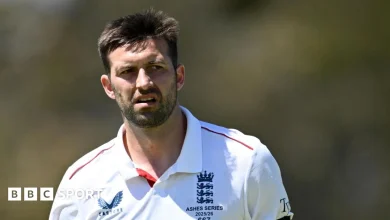Are Wales simply playing damage limitation against the All Blacks?

Before Wales’ game against New Zealand at the World Cup in 1995, the flanker Mark Bennett informed team-mates of his intention to stop the frighteningly quick and powerful youngster who had rapidly become the talk of rugby.
Most opponents had been awestruck even prior to lining up against Jonah Lomu. Nerves would have started the moment the teams were announced, for the oval-ball sport had not seen a player like him, a 6ft 5in, 19st wing who could bowl over opponents with sheer power or round them with searing pace.
Actually seeking him out on a rugby field – well, let’s just suggest that wasn’t the way for too many.
But Bennett was adamant. “He said he just wanted the chance to nail Lomu,” a Wales player later told this writer. “His opportunity came early in the game and he took it.”
Indeed, he did, with the teak-hard openside standing his ground with a scything hit that cut down the All Black in full flight, a sensation the then 20-year-old Lomu would not have been too familiar with. Mike Catt, Tony Underwood and Will Carling, all either trampled on or brushed aside by Lomu later in the tournament, would have done well to have watched and learned.
A micro-win for Wales against New Zealand, then, albeit one that took deep reserves of courage to pull off. The side coached by Alec Evans actually lost the game 34-9, but Bennett at least had something to tell the boys back in his home village of Crynant in the Dulais Valley.
Jonah Lomu was already a mighty adversary at 20, when facing Wales in what has been a one-sided rivalry for 72 years (Photo PHILIP LITTLETON/Getty Images)
Such small triumphs are pretty much all Wales have had to cling onto against the All Blacks in the 72 years since they last managed to get the job done on the scoreboard. Recall the Mexican standoff after the haka in Cardiff in 2008. The hosts claimed the verdict in that episode by outstaring the visitors. What they couldn’t do was outplay them over the subsequent 80 minutes as New Zealand won 29-9.
Five years earlier, Wales scored some picture-book tries against their old foes at the World Cup, actually racking up 37 points in the process, but the opposition posted 53 themselves. Head further back again and Nigel Walker marked Jeff Wilson out of the game in the clash at Wembley in 1997, while in 1988 Jonathan Davies was named man of the match in a 54-9 hammering for Wales in Auckland. And so it goes on.
What of this weekend? If the All Blacks are not exactly in prime form, so in the doldrums are Wales that anything less than a severe beating would probably be seen as worth taking by some – such are the depths the Red Dragons are exploring. They may have won two of their last three games, but few are convinced a significant revival is gathering pace.
Indeed, a friend suggested that another pal heading for the Principality Stadium for Saturday’s game would see two New Zealand points for every pound his £55 ticket cost him. Wild pessimism? Absolutely. But Wales need to be careful they don’t allow the All Blacks to start running away with matters.
The Japan game last weekend didn’t see much of an improvement from the loss to Argentina. In fact, there is a case for arguing that the Welsh performance was worse in many respects than their effort against the Pumas.
The Japan game last weekend didn’t see much of an improvement from the loss to Argentina. In fact, there is a case for arguing that the Welsh performance was worse in many respects than their effort against the Pumas.
Wales were starved of territory and second best in the matter of possession, too, with Japan quicker in thought and deed and blessed with greater handling ability. They passed crisply and ran boldly, playing heads-up rugby against opponents whose struggles for possession were matched only by their struggles for ideas.
Some stats: Japan lock Warner Dearns carried the ball 16 times, Wales’ starting locks made just six runs between them; the Brave Blossoms’ centres Charlie Lawrence and Dylan Riley motored forward 29 times, while their Welsh counterparts Ben Thomas and Max Llewellyn managed only eight attacking thrusts, albeit Llewellyn spent the final 19 minutes on the wing.
Just one Welsh player, Olly Cracknell, finished in the top 10 for carries made.
The Welsh lineout wasn’t the most reliable, either, while they won just three turnovers and lost the ball 19 times. It was a challenge, too, to slow down the visitors’ ruck speed, with Japan frequently running against a stretched defence.
Wales’ aerial game marginally improved against Japan with Louis Rees-Zammit getting more success (Photo Michael Steele/Getty Images)
Wales did marginally improve their aerial game – Blair Murray did better and there were a couple of successes for Louis Rees-Zammit, who at 6ft 2in should be winning his fair share of balls in the air – but they were also still inaccurate and too much of the possession they claimed was scruffily slapped down, often into Japanese hands, with Welsh players not always alert to the possibility of picking up crumbs of possession.
Maybe we can exempt Cracknell from criticism here, for he mopped up on several occasions. He is injured this weekend but has put down a marker for the Six Nations. He has few frills but much crunch factor: opponents who run into him on the pitch tend to thereafter seek less bothersome routes for their ball-carrying. Nor was he just about defensive duties against Japan, with the 31-year-old also making headway as a carrier.
His unavailability means Wales have had to reshape their back row, with Harri Deaves earning a call at openside, Alex Mann switching to blindside and Aaron Wainwright reverting to No 8. The certainty is Deaves will catch the eye, and not just because of his bright yellow scrum cap, with the man from Pontyclun a heart-and-soul player who doesn’t stop working for his team.
Mann will not object to being returned to No 6, notwithstanding that he let no one down in the openside role against Japan, playing with an edge: possibly, a number of Japanese players might have needed restorative sessions with a local panel beater after running into the Cardiff player.
When he isn’t scavenging on the floor for possession, he is on the shoulder of a ball carrier or taking play forward himself or hauling down an opponent with a corner-flagging tackle. Versatile enough to have played wing, centre and full-back in his younger days, he has a wide skill-set and he won’t be fazed by facing New Zealand. Instead, the one-time roofer will embrace the challenge.
Mann will not object to being returned to No 6, notwithstanding that he let no one down in the openside role against Japan, playing with an edge: possibly, a number of Japanese players might have needed restorative sessions with a local panel beater after running into the Cardiff player.
Their replacement lock Harry Hockings would not have been among them, but Saturday evening would not have been altogether pleasant for him after his reckless challenge on Mann in the final minutes that ultimately led to Japan losing the game. The assumption is Eddie Jones would not have led a chorus of ‘Three cheers for Harry’ in the dressing room afterwards.
There are four other Wales changes to face the Kiwis, with Joe Hawkins coming in at inside centre, Tom Rogers returning for the suspended Josh Adams and Rhys Carre and Keiron Assiratti starting at prop. Thomas makes way for Hawkins, meaning Wales have yet another fresh midfield partnership, their ninth since the last World Cup. At outside centre, Max Llewellyn needs a big game after a quiet effort last time out.
Wales last faced New Zealand at the Principality Stadium in 2022 (Photo Dan Mullan/Getty Images)
It will concern Tandy that Wales were never in control against Japan and hit all kinds of difficulties in securing territory, but there were some positive elements to the play of the half-backs. Tomos Williams had a hand in all three Welsh tries (after being involved in three out of the four they scored against Argentina), while Dan Edwards again proved a threat with his pace and also pulled off several important tackles.
Rees-Zammit? He can count as a plus with his running, which took him past eight defenders, but Wales need more composure from their fastest player, especially when he breaks. The wing could also tidy up other elements to his game, including his defence and aforementioned aerial work, but it is still early days after his return from American football and he will improve with every game he plays.
There wasn’t much else for the coaches to be encouraged by – the character of the side, perhaps, along with the coolness of Jarrod Evans in nailing the decisive penalty.
New Zealand weren’t anywhere near their best against England last weekend. Only Peter Lakai caught the eye up front, while aside from Cam Roigard and the exceptional Will Jordan, their backs were also out of sorts.
But the overall team performance was untidy and disappointing, calling to mind the effort against the Brave Blossoms in Cardiff in 2016, when it took a drop-goal from Sam Davies in the final seconds to secure a 33-30 success.
After that game, former national captain Martyn Williams said: “Wales are way off it. You can’t gloss over that. It was a dire performance. Wales were so slow and pedestrian. It’s a win but a real poor performance.”
Wales are way off it nine years on, but New Zealand weren’t anywhere near their best against England last weekend. Only Peter Lakai caught the eye up front, while aside from Cam Roigard and the exceptional Will Jordan, their backs were also out of sorts.
Even a less-than-vintage All Blacks, however, will expect to prevail comfortably this weekend. Possibly they will be intent on dishing out a hiding after their misadventure at Twickenham.
Can Wales stop them doing as they please? That will be the challenge. For the Welsh class of 2025, anything else will be a bonus.





